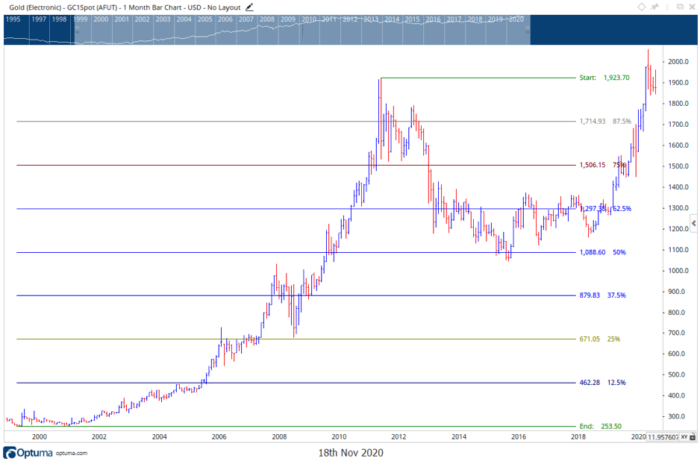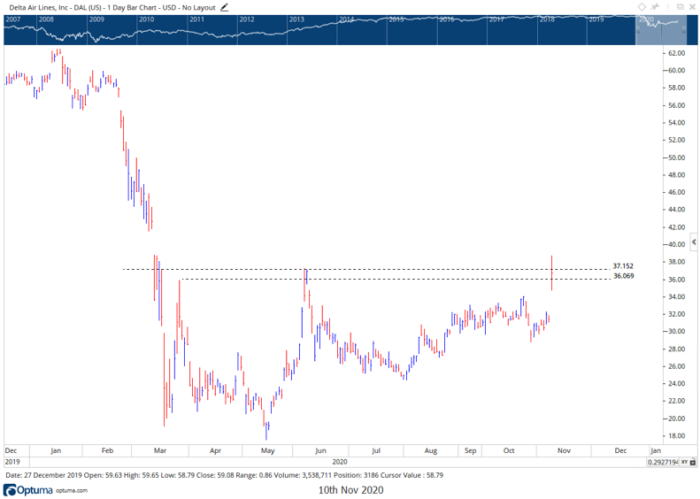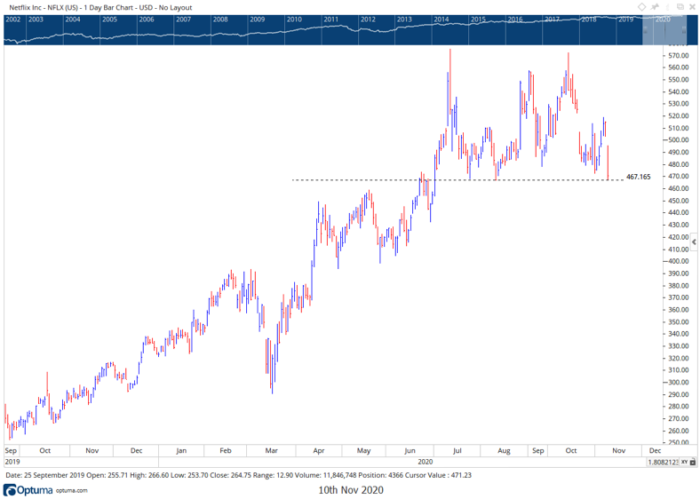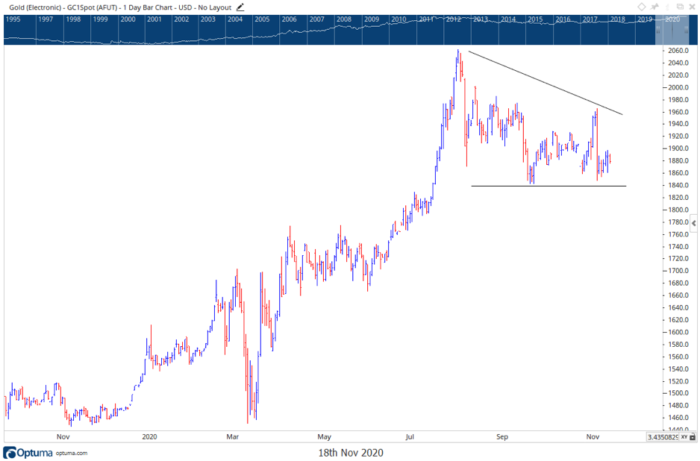The mid-point of every story
19th November 2020 |
Sam is off today but shall be back tomorrow with your regular Frontier Tech Investor update. Today Akhil Patel brings you his monthly update.
I’ve been doing a lot of reading recently on the craft of storytelling.
I’ve always been interested in this subject but I decided to delve more deeply into it when I started writing my book (due out next year) and decided I wanted to get better at telling stories and painting vivid scenes. All successful business books now need to be able to illustrate key concepts through good stories.
I’ve recently been reading Into the Woods: How Stories Work and Why We Tell Them by John Yorke. It has a lot of very interesting points to make about story structure. Something that particularly struck me was the importance of the mid-point. It’s key to the whole drama; it’s the turning point on which the whole action hinges.
In Macbeth it’s the point at which Banquo gets murdered. There’s no turning back now. In Dr No it was the scene when which James Bond got tortured. In any murder mystery, it’s the point at which the sleuth suddenly comes upon a key piece of knowledge that eventually gets them to catch the killer.
Now, this caught my interest for more reasons than what it had to say about stories. In markets, too, the mid-point is critical. Legendary trader W.D Gann who was a pioneering student of markets and cycles, talked of the mid-points as being one of balance.
In my studies of markets I know that a lot of emotion comes out at such points. Take the chart of gold below. Here is a classic mid-point.
From the low in 1999 to the post-financial crisis high of 2011, gold came back almost exactly 50% into late 2015.
It was an emotional move down, and commodity markets in general had a very bad year, particularly oil.
A lot of uber-wealthy hedge fund managers lost billions in 2013 when gold prices came down hard. I was trading the short side of that market, whereas they were talking gold up because of the fears of hyper-inflation that was “inevitable” after the QE central banks initiated as a response to the crisis.
I will come back to gold in a second. It seems at the moment people are again afraid of hyperinflation given the large stimulus that has been carried out as a response to the pandemic.
The mid-point of the story that I have been studying recently is to do with the real estate cycle – because we’re in it at the moment. And it’s proving to be quite the significant turning point of this particular saga.
If you think back to the early days of March when markets were in freefall as a result of the outbreak of the virus, what was the worst fear you had about the financial system, property markets or your stock portfolio?
I am willing to bet that the thought had crossed your mind (or those of your families and friends) about the possibility of a property market crash and major economic recession, along the lines of the global financial crisis.
If you didn’t have that thought organically, you’d have got it from any number of papers which were talking about the worst days in the markets since the collapse of Lehman Brothers.
But it’s at the mid-point of the cycle that the story changes.
The real estate cycle is a little like the Roman god Janus (after whom the month of January was named): in Roman mythology, the god had two heads, one looking backward, the other forward. And, like Janus during the first half of the cycle, we constantly look back at the past crisis and how it may return.
For us, the past crisis is a little like a baddie in the movie who somehow keeps coming back to life. But in the second half we look forward, so much so that we forget what happened in the past.
In this story as well, the mid-point, or mid-cycle recession, serves the purpose of turning our heads around.
Now, you might not think that a global pandemic and what many are calling the worst recession in the past several centuries is something that could get us looking forward. But there has been a most clear shift in sentiment over the past few months.
My inbox is now full of stories about the “future of commercial real estate”, the “future of work” , “building back better” – and it’s all telling me about how we need to think forward, imagine a different approach to practices we’d become used to; how this crisis is an opportunity.
Now don’t get me wrong. There are a lot of things to work out and adjustments (sometimes painful) still to be made. But the point is that people are expending energy and effort to think about them, devise solutions and put money towards them.
Another important indication of the change in sentiment was the different market reactions to the news of a possible breakthrough with the Pfizer vaccine. The news came out on Monday 9 November and caused a fair degree of euphoria.
Take a look at the chart of Delta Airlines and compare it to the one of Netflix (Charts 2 and 3). Delta’s share price had been hammered by the events of the past year, whereas Netflix had broken back above the January highs in April and didn’t look back.
Charts 2 and 3 – Delta Airlines and Netflix
However, on the day of the announcement the Delta share price was up 30%, and broke through the highs of May, around $36. By contrast Netflix was testing lows, around $467, with the potential for further downside. You’d see a similar pattern in other airlines stocks compared to tech ones.
In some ways this is not surprising. A vaccine means that international travel could open up again. And if things are more open generally, perhaps there will be less growth in Netflix earnings as people find better things to do with their time than watching television.
But it’s an indication of a change given how strong tech stocks have been relative to others over the summer. Another example of how the narrative has shifted was inadvertently presented in a Bloomberg Wealth article on 14 October 2020 (emphasis added):
Even a once-in-a-century pandemic is not enough to cool the Canadian housing market, with prices nationwide now forecast to end the year higher than where they started…
… The resilience of Canada’s housing market is not unique: home prices in many parts of the developed world have been defying the gloom of the Covid-19 recession.
But wait! How can that be if we were experiencing something worse than the global financial crisis? Regardless of where you are right now reading this, I will wager that you have been reminded constantly that your country is in the middle of recession.
Then add the once-in-a-100-year global pandemic for good measure, and it has probably been put to you in the past few months that the economy is going to collapse. And with it the property market.
And yet, Bloomberg is saying that in this case Canadian real estate prices are going up! The news portrayed in the above Bloomberg article is playing out not just in Canada but right across the world. The articles goes on to say:
In a sign the pandemic may be starting to shift homebuyers’ behaviour, the biggest price gains in Canada were seen not in Toronto but in suburban cities, including Oshawa, Hamilton and Mississauga, and in smaller cities”
Windsor (a smaller regional area) had the biggest average price appreciation in the country in the last three months at 17%.
The outcome of the Covid-19 recession has seen a profound change in behaviour in the real estate market globally, particularly driven by the best credentialled first-home buyers.
It is this first-home buyer market who have been showered with government stimulus measures designed to help them enter the property market. In the UK it was the stamp duty cut, record low interest rates and high loan-to-value mortgages that have got the market moving.
And with a combination of sky-high inner-city land prices and strict social distancing and curfew measures in place, these buyers are bidding against themselves to grab the most desirable locations in cheaper surrounding suburbs.
Naturally, this has led to higher prices.
This process is repeating all over the world. And because of it the mood music has changed decisively, and led to record-high prices in the UK and elsewhere. This is what the mid-point of the story, the real estate story, brings about.
One final point on gold.
Let’s take a look at recent market action.
Chart 4 – gold chart, daily
Gold had a run from March to August this year as governments enacted stimulus packages around the world.
The reason was largely about whether this stimulus would lead to inflation, hyper-inflation, a collapsing dollar and all the rest. A little like the run gold had from 2008 to 2011, following the collapse of Lehman Brothers.
In early August, I told my Property Sharemarket Economics subscribers to expect the top in gold. The top duly arrived a couple of days later. It’s possibly the most precise call in terms of timing I’ve ever made.
But the reason was simple. First, I have my long-term forecast for commodities. Gold tracks the commodity cycle.
The second reason was that I could sense that the panic that drove gold into all-time highs was starting to subside. There will be a great buying opportunity for gold in the coming months, but the time is not right for that. And until that point, people will be taking profits.
The second half of the story is now starting to be told. And this one will be about a quick, and possibly quite difficult, adjustment to a “post-pandemic” world, followed by a robust property market, with shifts in patterns as people looking for more space and access to green spaces; a massive rollout of infrastructure across the world which invariably pushes up property prices; plentiful bank credit and optimism. Add into the mix a more stable occupant of the White House and things will really get underway soon.
This is everything you’d expect from the second half of this story, a story that has been told for hundreds of years.
And, by the time we get to 2026, in the midst of a booming property market, a young chap will come to prominence who makes a declaration along the lines of: “Property prices can’t ever come down again – see how they held up during 2020, the worst crisis we have ever faced”.
If you know your real estate cycle history, you’ll know how the story unfolds after that.
Yours sincerely,

Akhil Patel
Frontier Tech Investor
PS You can follow me on Twitter (@AkhilGPatel; @Propertysharem1) or Linkedin (linkedin.com/in/akhilgpatel).





